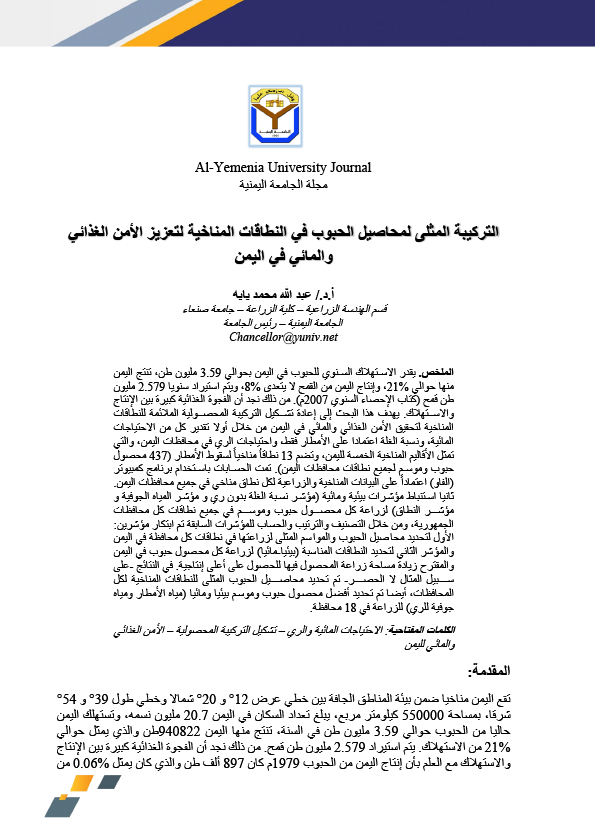Optimal combination of cereal crops in climatic zones to enhance food and water security in Yemen
Keywords:
Water and Irrigation Requirements, Crop Structure, Food and Water Security of YemenAbstract
Annual grain consumption in Yemen is estimated at about 3.59 million tons, of which Yemen produces about 21%, and Yemen's wheat production does not exceed 8%, and 2.579 million tons of wheat are imported annually (Statistics Yearbook 2007). Therefore, we find that the food gap between production and consumption is large. This research aims to reshape the crop structure appropriate to the climatic zones to achieve food and water security in Yemen by first estimating each of the water requirements, the yield percentage based on rainfall only, and the irrigation requirements in the governorates of Yemen, which represent the five climatic regions of Yemen, and include 13 climatic zones of rainfall (437 grain crops and seasons for all zones of the governorates of Yemen). The calculations were made using a computer program (FAO) based on climatic and agricultural data for each climatic zone in all governorates of Yemen. Secondly, deriving environmental and water indicators (yield ratio index without irrigation, groundwater index and range index) for the cultivation of each grain crop and season in all ranges of all governorates of the Republic, and through the classification, arrangement and calculation of the previous indicators, two indicators were created: the first to determine the grain crops and the optimal seasons for their cultivation in the ranges of each governorate in Yemen, and the second indicator to determine the appropriate ranges (environmentally-water) for the cultivation of each grain crop in Yemen, and it is proposed to increase the area of crop cultivation in it to obtain the highest productivity. In the results - for example, but not limited to - the optimal grain crops were identified for the climatic ranges of each governorate, and the best grain crop and season environmentally and water (rainwater and groundwater for irrigation) for cultivation in 18 governorates were also identified.



